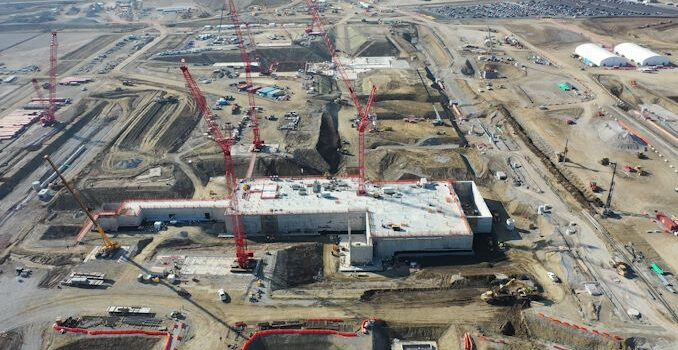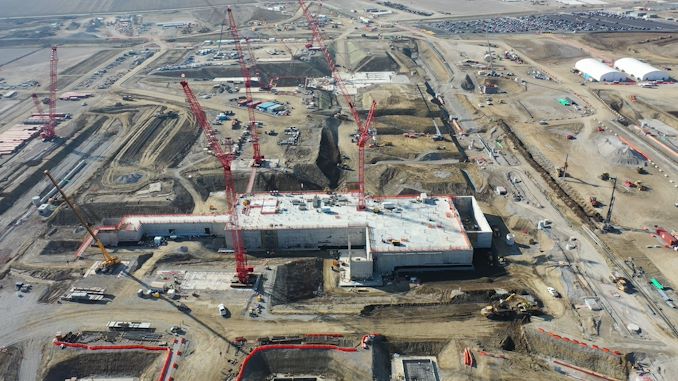Intel to Receive $8.5B in CHIPS Act Funding & Further Loans To Build US Fabs
Intel and the United States Department of Commerce announced on Wednesday that they had inked a preliminary agreement under which Intel will receive $8.5 billion in direct funding under the CHIPS and Science Act. Furthermore, Intel is being made eligible for $11 billion in low-interest loans under the same law, and is being given access to a 25% investment tax credit on up to $100 billion of capital expenditures over the next five years. The funds from the long-awaited announcement will be used to expand or build new Intel’s semiconductor manufacturing plants in Arizona, New Mexico, Ohio, and Oregon, potentially creating up to 30,000 jobs.
“Today is a defining moment for the U.S. and Intel as we work to power the next great chapter of American semiconductor innovation,” said Intel CEO Pat Gelsinger. “AI is supercharging the digital revolution and everything digital needs semiconductors. CHIPS Act support will help to ensure that Intel and the U.S. stay at the forefront of the AI era as we build a resilient and sustainable semiconductor supply chain to power our nation’s future.“
Intel is working on several important projects, including new semiconductor production facilities and advanced packaging facilities. On the fab front, there are three ongoing projects:
- Firstly, Intel is expanding its chip production capacities in Arizona — the Silicon Desert campus — by constructing two additional fab modules capable of making chips on Intel 18A and 20A production technologies at a projected cost of around $20 billion.
- Secondly, the company is building its all-new Silicon Heartland campus in Licking County, near Columbus, Ohio. This extensive project is anticipated to require a total investment of $100 billion or more when fully developed, with an initial investment of around $20 billion for the first two fabrication modules, which are set to be completed in 2027 – 2028.
- Thirdly, Intel is expanding and upgrading its chip production, research, and development capabilities in its Silicon Forest campus near Hillsboro, Oregon. In particular, the company recently began installing a $380 million High-NA EUV tool in its D1X fab in Oregon.
Regarding advanced packaging facilities, Intel is about to complete the conversion of two of its fabs in its Silicon Mesa campus in New Mexico to advanced packaging facilities. These facilities will be crucial to building next-generation multi-chipset processors for clients, data center, and AI applications in the coming years, and which will be the largest advanced packaging operation in the US. Meanwhile, with advanced packaging capacity in New Mexico already in place, the state is set to concentrate vast advanced packaging capabilities to support Intel’s ramp of leading-edge fabs in Arizona, Ohio, and Oregon.
To receive both the $8.5 billion in direct funding and the $11 billion in low-interest, long-term loans, Intel must comply with the terms set in the so-called preliminary memorandum of terms (PMTs). The PMT specifies that receiving direct funding and federal loans will only be provided after thoroughly reviewing and negotiating detailed agreements. These financial awards also depend on meeting specific milestone goals, which are not public, but are thought to include terms concerning investments, timing, and workforce developments. Finally, all of this funding is subject to the availability of remaining CHIPS Act funds.
On top of this direct financial assistance, if Intel meets the U.S. government’s requirements, it can also access a 25% tax credit on up to $100 billion of qualified capital expenditures over the next five years. This will make Intel’s CapEx – the most expensive part of building and outfitting a chip fab – ‘cheaper’ for the company and stimulate it to invest in the U.S.
“With this agreement, we are helping to incentivize over $100 billion in investments from Intel – marking one of the largest investments ever in U.S. semiconductor manufacturing, which will create over 30,000 good-paying jobs and ignite the next generation of innovation,” said U.S. Secretary of Commerce Gina Raimondo. “This announcement is the culmination of years of work by President Biden and bipartisan efforts in Congress to ensure that the leading-edge chips we need to secure our economic and national security are made in the U.S.“
Source: Recent News


